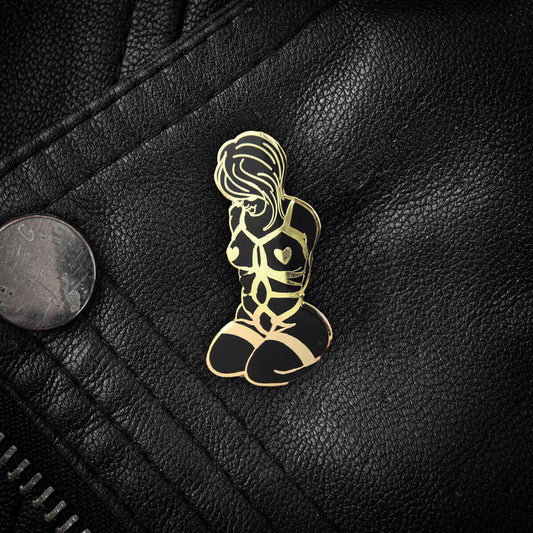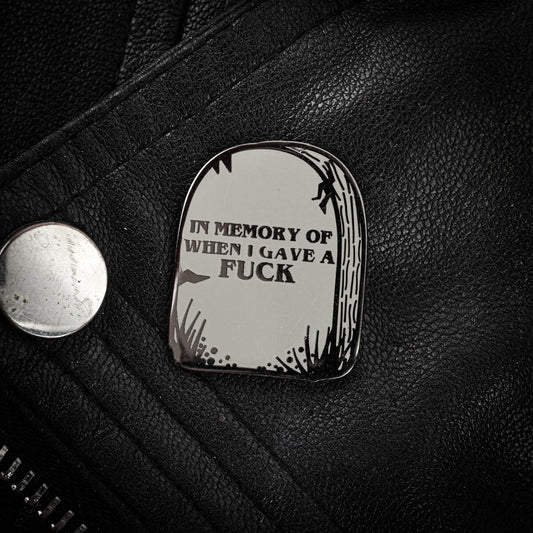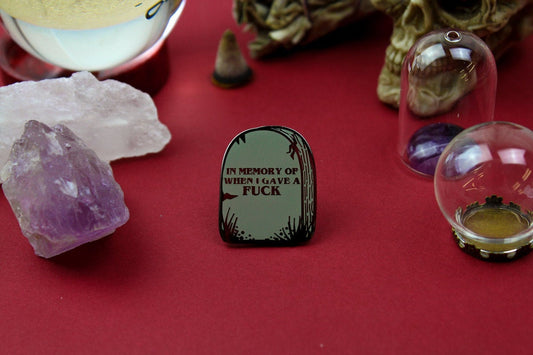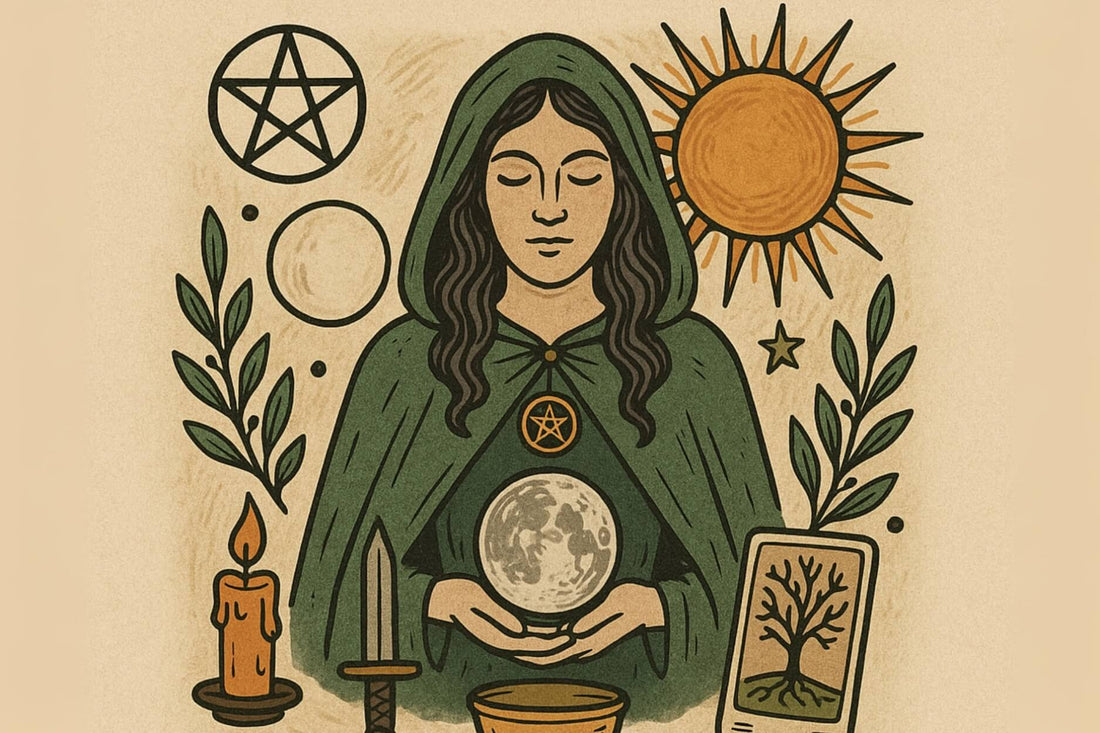
What are the Main Practices in Wiccan Faith?
Share
Wicca is a modern pagan religion built around practice, not belief. It’s hands-on and personal. Most of it happens through repeated rituals, seasonal events, and energy work. There’s no single rulebook. Different groups follow different traditions, and many people practise alone. Still, some habits show up almost everywhere. These include moon rituals, spellwork, nature worship, and divination, because Wiccans build their faith through doing.
Key Points
- Wiccan practice is action-based – Rituals, seasonal celebrations, and energy work form the core of the faith. Belief takes a back seat to what practitioners actually do.
- Magic is intentional, not theatrical – Spellwork is focused on personal growth, healing, protection, and clarity. It’s guided by ethics, especially the rule to avoid harm.
- Nature is central – The cycles of the moon, seasons, and elements are treated as sacred. Wiccans observe and align with these forces rather than trying to control them.
- Solitary and group paths are both valid – Some follow structured coven traditions with formal initiations. Others practise alone or create personal rituals without external authority.
- Everyday life matters – Simple acts like meditation, journaling, or lighting a candle are just as important as large rituals. Ethics, mindfulness, and respect guide daily choices.
Ritual and Ceremony
Wiccan practice revolves around ritual. These aren’t random performances - they mark time, direct energy, and create focus. The year is split into eight Sabbats. These follow the agricultural and solar cycles: solstices, equinoxes, and the points between. Celebrating them connects Wiccans to the changing seasons. Each one has its own meaning. For example, Samhain (31 October) - which is actually the Scottish Gaelic word for November - is linked to death and ancestors, while Beltane (1 May) - which is basically the Gaelic May Day festival - is tied to fertility and fire.
Esbats are different. They happen during full moons, sometimes new moons. These are for personal or group rituals, often involving magic or reflection. Many Wiccans find the moon more powerful than the sun. It’s seen as tied to emotion, intuition, and feminine energy.
Most formal rituals start by casting a circle. This isn’t just symbolic. Wiccans believe it creates a protected space between physical and spiritual worlds. Inside the circle, four elements (earth, air, fire, water) are often invoked by facing the four cardinal directions. A typical altar might hold an athame (ritual blade), chalice, candles, incense, salt, and a pentacle.
Ceremony helps focus intent. It sets the mood and signals that something meaningful is happening. Wiccans don’t pray in the usual sense. Instead, they raise energy and direct it, either for healing, change, or celebration.

Photo by Maria Loznevaya: https://www.pexels.com/photo/close-up-of-a-woman-holding-a-burning-candlestick-18943512/
Magic and Spellwork
Similarly to the Occult Magick, Wiccan magic isn’t flashy. It’s subtle, quiet, and based on intent. The idea is simple: thoughts and energy affect the world. Wiccans use spells to direct that energy. These can be spoken words, written charms, or full rituals. The goal might be protection, healing, clarity, or emotional strength. Some spells are quick, using a candle or herb. Others are detailed and timed to moon phases or planetary hours.
There’s a strong focus on ethics, which applies to spellwork too. Trying to control others, even with good intent, is usually avoided. Many also follow the idea of threefold return - what you send out comes back stronger. That keeps people careful and thoughtful.
Magic is seen as natural, not supernatural. It’s tied to cycles, seasons, and personal energy. There’s no split between magic and everyday life. Preparing food, lighting a candle, or planting a seed can all be magical acts if the intention is clear.
Tools are sometimes used, but they aren’t required. Herbs, crystals, symbols, and candles are common. They’re not magic on their own. They just help focus the person’s intent. Some Wiccans write their own spells, others follow traditional ones. There’s no right way, but most agree on this: it’s the will and focus that matter most.
Nature Worship and Reverence
Wicca is closely tied to the natural world. Seasons, weather, tides, and moon phases are all part of the sacred structure. Wiccans pay attention to these cycles because they reflect life, death, change, and renewal.
Most Wiccans honour two core deities: the Goddess and the God. These aren’t fixed in form. Some see them as literal beings. Others treat them as symbols of natural forces. The Goddess is usually linked with the moon, the earth, and fertility. The God is often tied to the sun, forests, and animals. Their interaction shows up across the Wheel of the Year. For example, in many traditions, the God is born at Yule, grows stronger through spring, and dies at Samhain.
Elements also matter, i.e. earth, air, fire, and water. These aren’t just symbols; they’re seen as real forces in the world and in the self. Many rituals include them. Earth for stability, air for thought, fire for energy, and water for emotion. Spirit is sometimes listed as a fifth element, representing the link between the rest.
Animals, trees, rivers, and stones are respected. Some Wiccans keep sacred spaces outdoors. Others bring nature inside with altars, herbs, or collected objects. Gardening, hiking, and watching the moon rise can be just as spiritual as formal ritual.
It’s not really about controlling nature, it’s more about listening to it and living in sync with it, and respecting it as something alive, powerful, and worthy of attention.

Photo by cottonbro studio: https://www.pexels.com/photo/person-in-black-shirt-holding-red-textile-4327028/
Meditation and Visualisation
Wiccan practice isn’t all about rituals and spells. A lot of it happens quietly, through the mind. Meditation is used to focus, clear mental noise, and connect with deeper insight. It can be as simple as breathing in silence or as structured as a guided journey. There’s no fixed rule, but most Wiccans use meditation to build awareness and prepare for magical work.
Grounding and centring are common first steps. Grounding helps release excess energy into the earth, especially after ritual or emotional stress. It can involve visualising roots growing from the body into the ground. Centring brings focus inward, helping the person stay calm and steady. These techniques are often done before and after ritual to stay balanced.
Visualisation is also key. This means forming strong mental images - not just imagining something, but feeling it clearly with all senses. In spells, visualisation helps direct energy. For example, someone might visualise a protective shield around their home or see their body glowing with health. The sharper the image, the more powerful the intent feels.
Pathworking is another method. It’s a type of guided meditation where the person imagines walking through symbolic landscapes - a forest, a cave, a tower. These paths often lead to messages, inner clarity, or contact with deity figures. Some Wiccans write their own pathworkings. Others follow recordings or books.
These mental skills take practice. They’re not flashy, but they support everything else. Without focus and clarity, spells can feel empty. With strong mental control, even a simple candle ritual becomes something precise and powerful.
Divination
Again, similarly to the Occult, Divination is a regular part of Wiccan practice. It’s not used to predict the future like a fortune teller. It’s more about reading energy, spotting patterns, and gaining insight into a situation. It helps Wiccans make decisions, plan rituals, and reflect on what’s going on below the surface.
Tarot cards are the most popular tool. Each card has its own symbols and meanings. The cards are shuffled and laid out in a spread, then interpreted based on their position and relationship to each other. It’s not just about memorising meanings - intuition plays a big part.
Other tools include runes, pendulums, scrying mirrors, and crystal balls. Runes are symbols carved onto small stones or wood pieces, each linked to a Norse idea or force. Pendulums are weighted objects on a string, used to answer yes/no questions based on movement. Scrying involves staring into a reflective surface to let images form in the mind.
Some Wiccans practise astrology, numerology, or use dream journals to track recurring symbols. The point is to stay in tune with subtle shifts - in mood, energy, and surroundings. Divination is often done before rituals to choose the best time or focus.
It’s also used during Esbats or personal spiritual work. For example, someone might draw a card during a full moon ritual to understand what phase they’re in emotionally or spiritually.
There’s no claim that these tools offer hard facts. Instead, they provide a structure for thinking deeply and noticing things that might get missed. Wiccans treat divination as a way to explore the present more than to lock down the future.
Initiation and Covens
Wicca can be practised alone, but many people are drawn to group work. A coven is a small, structured group that meets regularly for rituals, study, and shared practice. Traditional covens follow set rituals and lines of teaching, often based on older systems like Gardnerian or Alexandrian Wicca. These groups usually require formal initiation, which marks the start of deeper training.
Initiation isn’t casual. It often involves months or even years of learning and preparation. The ritual itself is private, sometimes secret. It usually includes a symbolic death and rebirth, showing the shift from outsider to insider. Some covens have multiple levels of initiation, each tied to experience and responsibility within the group.
In a coven, roles are usually defined. There’s often a High Priestess and High Priest who lead rituals and guide others. Members may take on tasks or titles depending on their path and training. Group ritual has a different energy than solitary work. It can feel stronger, more focused, and more complex due to the shared intent.
That said, solitary Wiccans are just as valid. Many choose to self-initiate. This means creating their own rite to mark commitment to the Wiccan path. It’s personal and meaningful, though not always recognised by traditional covens. Some solitaries work loosely with others in online or informal groups, sometimes called “circles” rather than covens.
There’s no central authority in Wicca. Each coven sets its own standards, and solitary practitioners shape their own paths. The core idea is personal growth, spiritual connection, and a deepening of practice - whether done in a group or alone.

Photo by dilara irem: https://www.pexels.com/photo/deck-of-tarot-cards-in-close-up-photography-14730818/
Daily Practice and Ethical Living
Wicca isn’t only about ritual dates and moon phases. Many Wiccans have a daily or weekly routine that keeps them connected to their path. This might include lighting candles, journaling, meditating, or observing the moon. Some leave offerings to the deities or spirits of place. Others draw a tarot card each morning or recite a short blessing before meals. These small acts add rhythm and focus to everyday life.
Personal altars often play a part. These aren’t fancy or elaborate unless the person wants them to be. An altar can be a shelf with a candle, some stones, and a small bowl of water. It gives a focal point for intent and reflection. Some change their altar with the seasons; others leave it constant.
Ethics are another daily concern. Wiccans don’t have a rigid list of commandments, but they do follow strong guidelines. The Wiccan Rede - “An it harm none, do what ye will” - underlines most moral decisions. That’s easy to quote but hard to apply. It requires people to think through the results of their actions.
Many also live by the Law of Threefold Return: whatever energy you send out comes back three times as strong. Whether taken literally or not, it pushes people to act with care. Respect for others, responsibility, and self-discipline are seen as essential.
Living in harmony with nature shows up in choices too. Some Wiccans grow their own food, avoid fast fashion, reduce waste, or support animal rights. Not all are strict, but the underlying goal is the same: live consciously and reduce harm.
The faith is practical. It’s less about belief and more about how you live, think, and act. Daily choices matter just as much as any full moon ritual!
